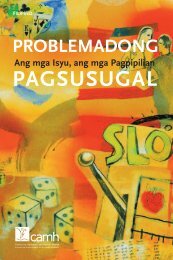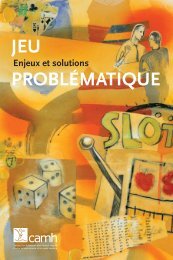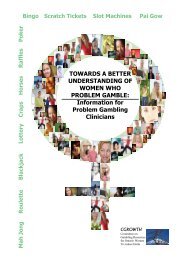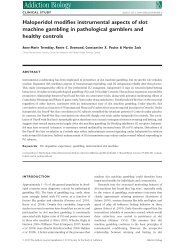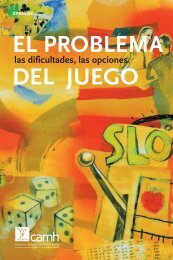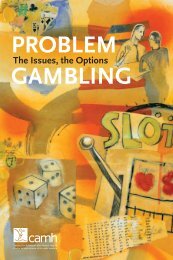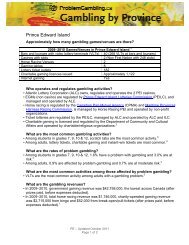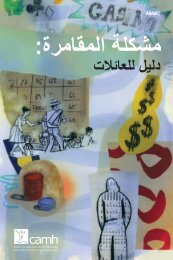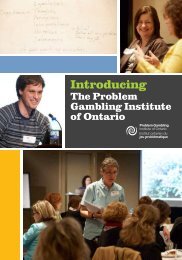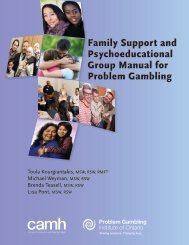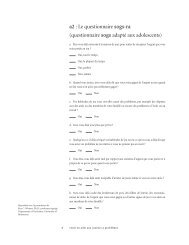Youth Making Choices: Gambling Prevention Program
Youth Making Choices: Gambling Prevention Program
Youth Making Choices: Gambling Prevention Program
Create successful ePaper yourself
Turn your PDF publications into a flip-book with our unique Google optimized e-Paper software.
Unit 7: Reducing RiskAppendix AStudent Resource 3 p. 2C. Magical Thinking“Magical thinking” is a thought or belief that certain coincidences are actually connected or thatthere is a causal relationship where none exists, for example, carrying an umbrella will ensureit doesn’t rain. When people are faced with ambiguity and the unknown, it’s natural for them toseek explanations or a sense of control, and depending how stressed they are, they may engagein magical thinking. In human development magical thinking is used to try to make sense of theworld and keep our fears at bay. It usually occurs in childhood (e.g., a child who believes herdisobedience caused her father to fall ill) and is not used as much as we develop more adultcoping strategies to deal with life’s challenges. In highly stressful situations, however, peopledo regress to earlier ways of coping, and magical thinking is a common one they fall back on.Many people with problem gambling will resort to magical thinking; examples include blowingon dice to make them lucky, wearing a lucky shirt or choosing special numbers that haveemotional significance.D. Peer Pressure (School, Work, Games)The effects of group influences on an individual’s behaviour have been a central concern ofsocial psychologists. It has been shown, for example, that one is more prone to take riskswhen the group he or she identifies with engages in and supports such behaviour. The needsto belong and be accepted by peers are strong enough human motivators to impel a person tobehave with greater risk in the context of a group than when alone. This is especially true withadolescents and young adults. <strong>Gambling</strong> is a common activity that youth engage in; for example,they may have their friends over to play Texas Hold ’Em poker in their homes. <strong>Youth</strong> may also bebullied into gambling, or may feel compelled to gamble to fit in with popular kids.E. Parental Role ModellingLong after the school and work day is over, peer pressure and curiosity can impel youth to “needto know” what’s going on in their online “worlds.” Social networking appears to be the preferredcommunication method of 21st-century youth.Parents need to take a more active role in knowing how their kids use technology. It’s not onlyimportant to look at youth’s use of technology, but how the parents themselves “role model”behaviour. For instance, many parents have slowly allowed their work-family balance to blurby checking BlackBerrys at the dinner table or answering business e-mails at 9:00 a.m. on aweekend. And there are many adults who also engage in video-game activities, some evenbecoming “pro-gamers.”As with gambling, technology and gaming, this role modelling also applies to parents’ own useof alcohol, nicotine and caffeine and the impact that may have on their children. Sometimes onefamily member becomes what we call “the identified patient,” because his or her problems arethe most obvious. This triggers the entire family to seek help from a therapist. What is often seenthen is that other family members have addiction and mental health issues that have not beendealt with.<strong>Youth</strong> <strong>Making</strong> <strong>Choices</strong>: <strong>Gambling</strong> <strong>Prevention</strong> <strong>Program</strong>www.Problem<strong>Gambling</strong>.ca7.11




